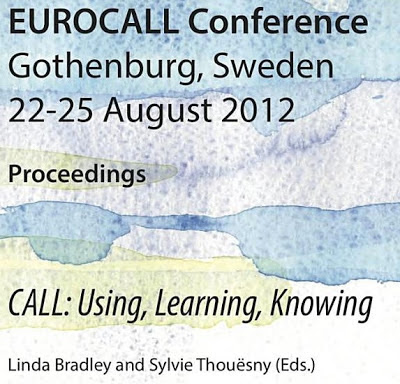Link.
Category: EUROCALL
CorpusCALL: Using pedagogic corpora in ELT
María Sánchez-Tornel & Pascual Pérez-Paredes
CorpusCALL: Using pedagogic corpora in ELT
María Sánchez-Tornel & Pascual Pérez-Paredes
20 years of EUROCALL: Learning from the Past, Looking to the Future

EUROCALL 2013 – University of Évora, Portugal
Areas covered during the conference:
Recent developments in mobile learning
Language learning in virtual environments
Synchronous communication in language learning
European Language Portfolio, self assessment and ICT
Challenges of e-learning: the role of the institution
E-learning: student expectations and experience
Successes of e-learning through the eyes of the student
The use of new technologies for language teaching in schools
Promoting the use of new technologies amongst language teaching professionals
Developments in the pedagogy of online learning
Corpora and language learning
Courseware design
Cross-sector collaboration through e-learning
Supporting less widely taught languages through CALL
Improving intercultural competence through language learning
Managing multimedia environments
Distance and collaborative learning
Self access and learner autonomy
20 years of EUROCALL: Learning from the Past, Looking to the Future

EUROCALL 2013 – University of Évora, Portugal
Areas covered during the conference:
Recent developments in mobile learning
Language learning in virtual environments
Synchronous communication in language learning
European Language Portfolio, self assessment and ICT
Challenges of e-learning: the role of the institution
E-learning: student expectations and experience
Successes of e-learning through the eyes of the student
The use of new technologies for language teaching in schools
Promoting the use of new technologies amongst language teaching professionals
Developments in the pedagogy of online learning
Corpora and language learning
Courseware design
Cross-sector collaboration through e-learning
Supporting less widely taught languages through CALL
Improving intercultural competence through language learning
Managing multimedia environments
Distance and collaborative learning
Self access and learner autonomy
